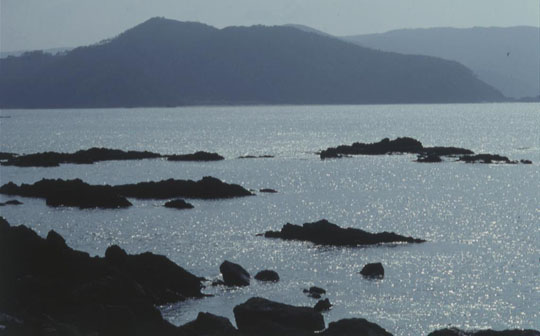Despite the environmental mistakes of the postwar decades, the violation of a once pristine landscape, a recent trip to Amami Oshima, gave very real cause for hope. Some regions have always, it seems, been in good shape. Flying over the island's green, volcanic hills, I felt as if I were gazing down upon an eastern Camelot.
Amami Oshima was once part of the Ryukyu, or Okinawan islands, before being absorbed into the distant administrative circle of Kagoshima Prefecture. While distinct from both Okinawa and Kyushu in ways that are not always easy to articulate, Amami, sharing differences and affinities with both regions, succeeds in blending the best of both worlds.
The folklorist Kunio Yanagita was one of the first people to try and situate the islands within some kind of geo-ethnic category. Yanagita took a coal-fueled steamer from Kagoshima and arrived in the port of Naze in 1921. In Yanagita's descriptions of the customs and local history of the islands, one senses their duality. In visible lines transecting the island, today's visitor can make out indicators of that conflation of two cultures and topographies. Where the coral, finely grained white sands, palm trees, hibiscus and bougainvillea of the coastal areas appear to speak of Okinawa, wooden houses with zinc roofs seem closer to Kagoshima. Above the rooflines of homes, slopes rise from subtropical to temperate levels.


















With your current subscription plan you can comment on stories. However, before writing your first comment, please create a display name in the Profile section of your subscriber account page.